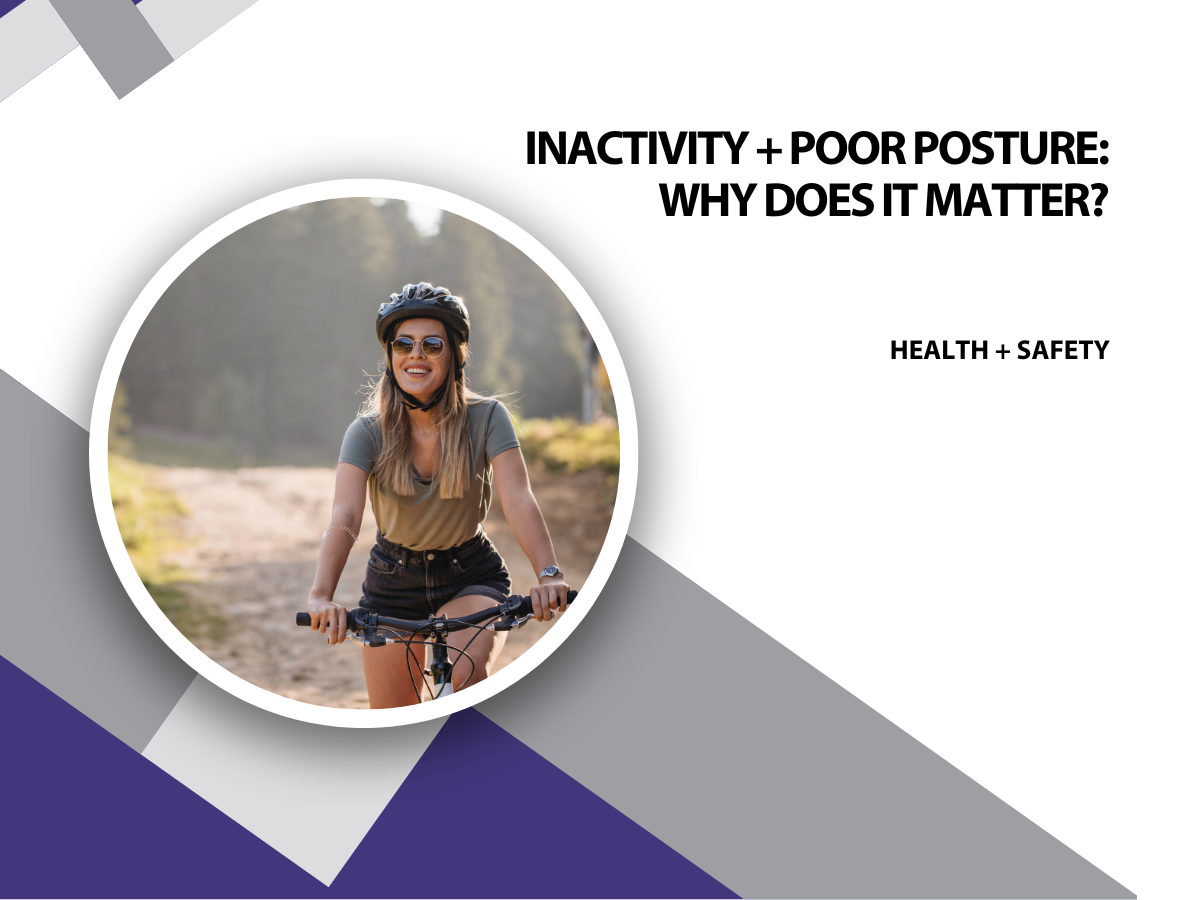Inactivity, Poor Posture, and Muscle Health
Many know that strenuous activities and sports can lead to muscle strains, but did you know that inactivity and poor posture can do the same?
With 1.4 billion adults being physically inactive, it is common for many people to engage in activities that promote inactive lifestyles and bad posture.
Why does this matter for your muscle health?
Keep reading as we explore a few of the consequences this can have and how to prevent it.
What is muscle straining?
When a muscle is stretched too far or forced contractions occur, it can result in muscle strain. Simply, muscle strain is tearing the muscle fibers.
Muscle straining can happen in any muscle in the body in regions like the lower back, neck, thigh, and shoulder.
How do I know if I have strained a muscle?
According to Harvard Health Publishing, if you have a strained muscle, you could experience some of these symptoms:
- Cramps or spasms
- Swelling
- Limited muscle function or strength
- Popping or tearing sensation
- Muscle pain or tenderness
To know for sure, it is important to see a health care professional, like an ART Certified Provider, where you will discuss your symptoms and the cause of your pain.
From there, they will determine the severity of the strain which ranges from:
- Grade 1: Mild
- Grade 2: Moderate
- Grade 3: Severe
Inactivity and muscle health
Being inactive does not directly cause muscle straining, however, it does contribute to certain factors that put you at more risk of muscle strain.
Are you wondering how?
Weakened Muscles
When you are inactive for long and consistent periods of time, your muscles can weaken leading to decreased strength.
Weak muscles are more susceptible to strain because they do not have the required support and stability to handle physical stress. This makes repetitive motion even more difficult for your muscles to keep up with.
Lack of Flexibility
The limited ability for your muscles to stretch and move causes a lack of flexibility, creating an increased likelihood of muscle strain.
Poor Circulation
Reduced blood circulation can also lead to muscle weakness, fatigue, and impair soft-tissue healing, making muscles more prone to strains and injuries. This is because poor blood flow does not allow oxygen and nutrients to be delivered to the muscles.
Reduced Muscle Elasticity
If you lose muscle elasticity, your muscles will not return to their original shape after being stretched. This decreases muscle resistance to strain from any sudden movement.
To prevent an inactive lifestyle, the CDC recommends at least 150 minutes of weekly exercise, which is about 21 minutes per day.
Posture and muscle health
Poor posture can contribute to muscle straining and increase the risk of developing musculoskeletal conditions.
Before you read on, take a moment to straighten your spine, move your shoulders back and down, and engage your core muscles. Alright, now you’re ready to learn how:
Muscle Imbalance
Poor posture means you are sitting or standing in an unnatural alignment of the spine resulting in muscle imbalances. When a muscle is overactive or tight, others become weak or consistently stretched. Muscle imbalances can lead to strain from this excessive stress.
Muscle Stress
Poor posture places additional stress on your muscles and joints. For example, prolonged sitting with poor posture can increase the pressure on the lower back muscles leading to muscle strain from the increased muscle load.
Reduced Muscle Support
When maintaining good posture, your body weight is evenly distributed throughout your muscles and joints, giving you support and stability. When there is an uneven distribution, it causes excessive stress on certain muscles increasing the likelihood of strain.
Spinal Misalignment
Slouching rounds the shoulders and causes excessive curvature of the spine that can result in a misaligned spine. This affects the function and alignment of the surrounding stabilizing muscles and after a prolonged period of stress, you guessed it, spinal misalignment can cause strain.
Why is this important?
Active lifestyles, posture, and good muscle health are crucial factors in maintaining overall health, longevity, and livelihood for several reasons.
How do these play a role in supporting your quality of life?
- Improves your health and well-being
Strong, healthy muscles support good posture, improve mobility and stability, and be able to move freely without any limitations or discomfort.
- Prevents injuries
Inactive lifestyles can increase the likelihood of a musculoskeletal injury. With regular physical activity and keeping good posture, you can prevent strains and other conditions from developing.
- Healthy aging
Regular exercise and good posture promote strong muscles which support your bone health, reduce the risk of falls, and will allow you to continue doing the things you love as you age.
- Improved fitness levels
Healthy muscles are vital for optimal athletic performance. It does not matter if you are an athlete or just enjoy being physically active. Your endurance and strength are supported by healthy muscles allowing you to perform well.
What you can do
We’ve shared with you why it is important to maintain your muscle health. By living a more active life, you are being proactive in your overall health, well-being, and preventing injuries.
Now that you have this information, what can you do with it?
To prevent muscle straining there are plenty of ways you can stay active including:
- Stretching and strengthening exercises
- Regular exercise
- Go on walks
- Warming up before exercising
- Well-balanced diet and high-potassium foods
- Stay hydrated
- Let injuries fully heal
Now that you know the effects poor posture and an inactive lifestyle can have on your soft tissue and muscle health, what changes will you make?
Let us know in the comments section.
